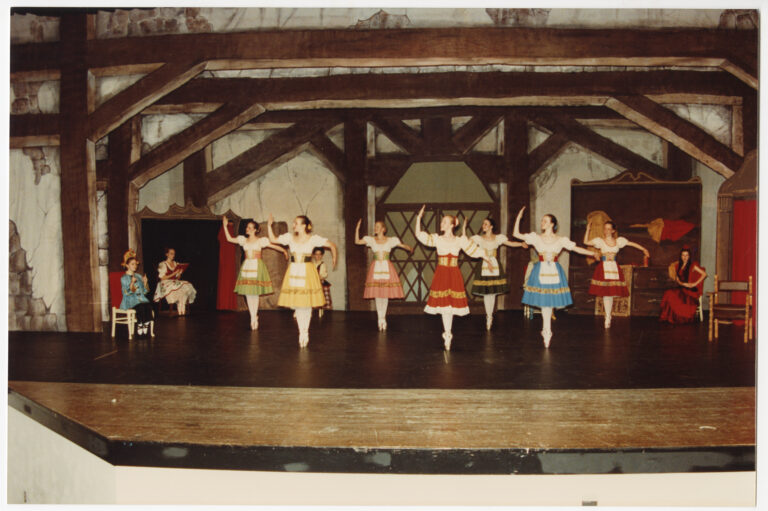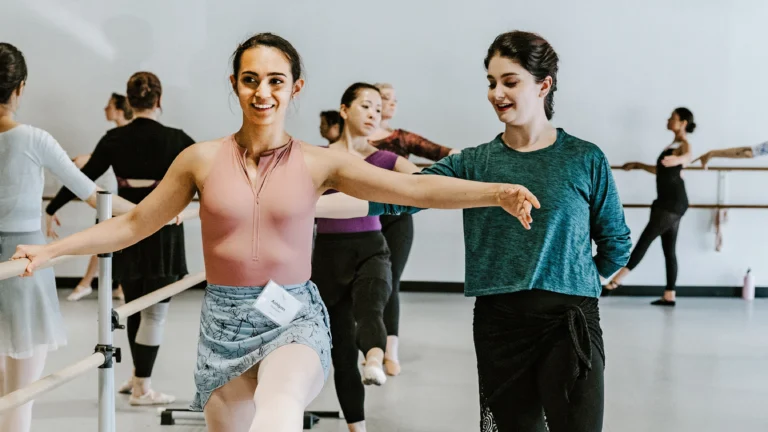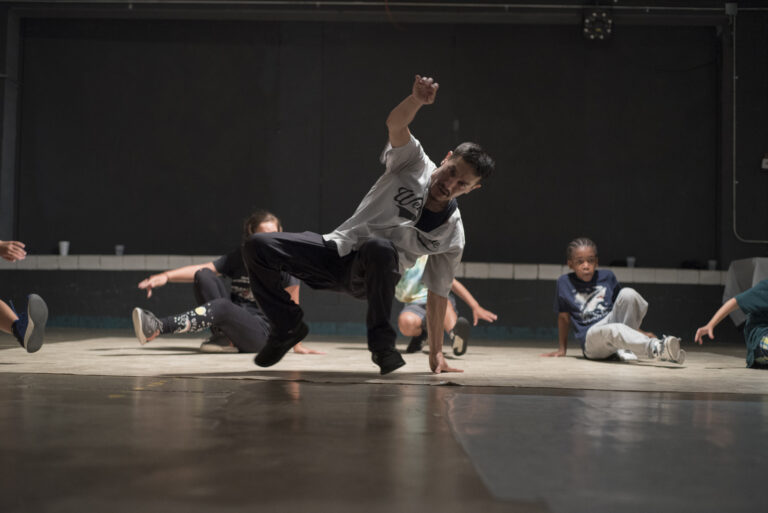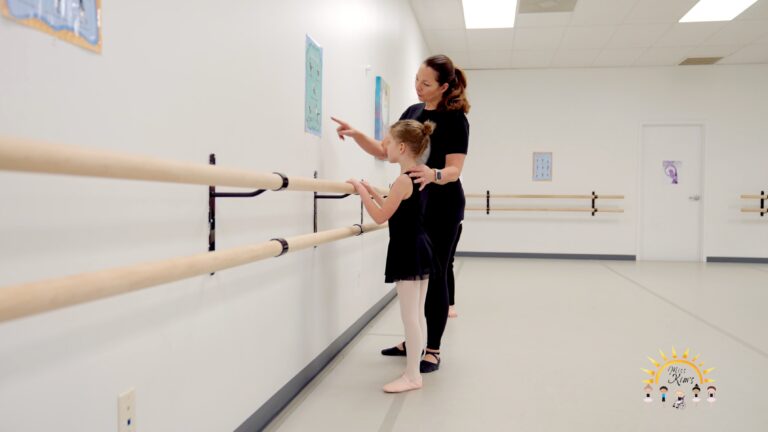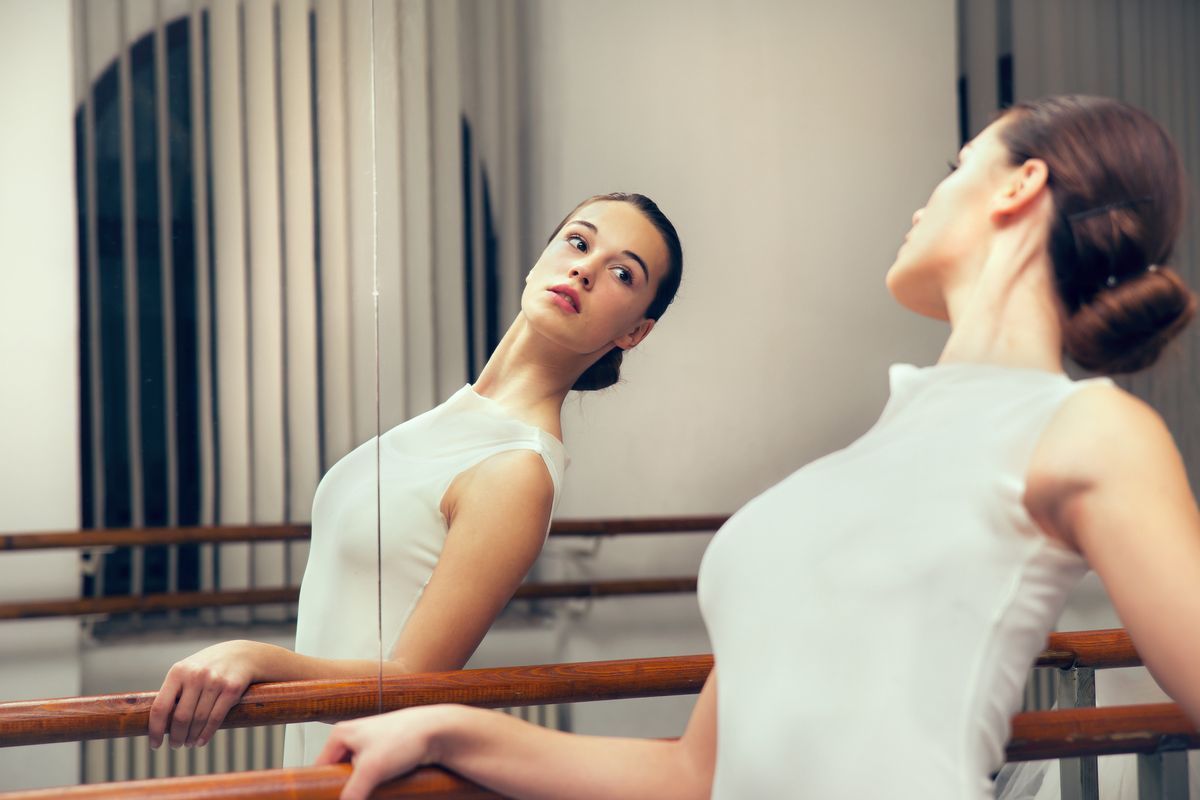
Love ’em or hate ’em, whether they cover one wall or four, mirrors abound in dance studios. But are they a useful learning tool?
Sally Radell, a professor of dance and movement studies at Emory University, says, “That’s a good question. Because the more research I do, I haven’t found that yet.” And she’s done a lot of research.
Body-Image Blues
Radell’s most recent study on the complex dancer/mirror relationship looked at how mirrors affected the body images of beginning and advanced female college ballet students.
At the end of the 14-week semester, the beginners said the mirrors made them feel more self-conscious, and they would use them to criticize themselves and compare themselves to others in the class. While the advanced dancers said they had tried to develop ways to avoid the mirror—feeling the movements rather than continually watching their reflections—their body-image scores also fell. This was a bad predicament, since they were even lower than the beginners’ to start with.
Also likely due to the mirrors, beginning dancers felt their physical fitness dropped over the course of the semester. While advanced dancers felt more in shape—probably since they were enrolled in several dance classes at a time and exercised more overall than beginners—they also felt worse about their bodies as they became more preoccupied with weight.
“Even with the knowledge that mirrors are problematic, they can cause dancers to be overly critical and create lots of body-anxiety issues,” says Radell. “If a dancer has a poor body image, it’s psychologically damaging. It impacts their ability to be successful in the classroom. If you feel really bad about how you look, it’s hard to perform your best.”
Slowing Progress
Previous studies also show mirrors affect ballet education in other ways (and Radell is currently studying if and how they affect modern dance students, too). By removing the mirrors, or at least seriously limiting their use, students:
- remember dance steps better
- advance from focusing on body parts and individual positions to movement and flow
- become less self-consciousness and more expressive
Removing mirrors also improves technique. Two of Radell’s studies showed that, while learning a slow adagio phrase, students without mirrors progressed farther technically than those with mirrors. Why? They weren’t preoccupied with staring at themselves.
This also links to proprioception, or the ability for a dancer to feel where her body is in space and what it’s doing. If a dancer becomes visually reliant on a mirror, she doesn’t learn to trust her other senses—which become essential during a performance, for example, when that crutch is no longer there.
Top Mirror Tips x 2
So when does mirror use make sense? With college-age students (the only age Radell has studied), she has found mirrors can come into play beneficially with lower-level beginners.
“A lot of them were drawn to ballet because it’s a beautiful artform; it’s graceful. So watching themselves in the mirror was part of the fantasy of living this,” she says. On the other hand, “The higher-level dancers, the ones who are more skilled, saw themselves and could identify, ‘Oh my gosh, my hip is out of place, my alignment is poor, I’m not having good turnout.'” This ability to self-criticize brought their body images down.
Radell also believes mirrors are useful as a last resort. If, for example, a student’s leg is bent but she absolutely can’t feel it, the brief use of a mirror can help a teacher point it out by sight.
Otherwise, Radell says, “I’m very cautious about the use of a mirror. I wouldn’t say never, ever use it. But I would say really limit your use of it, big time.”
